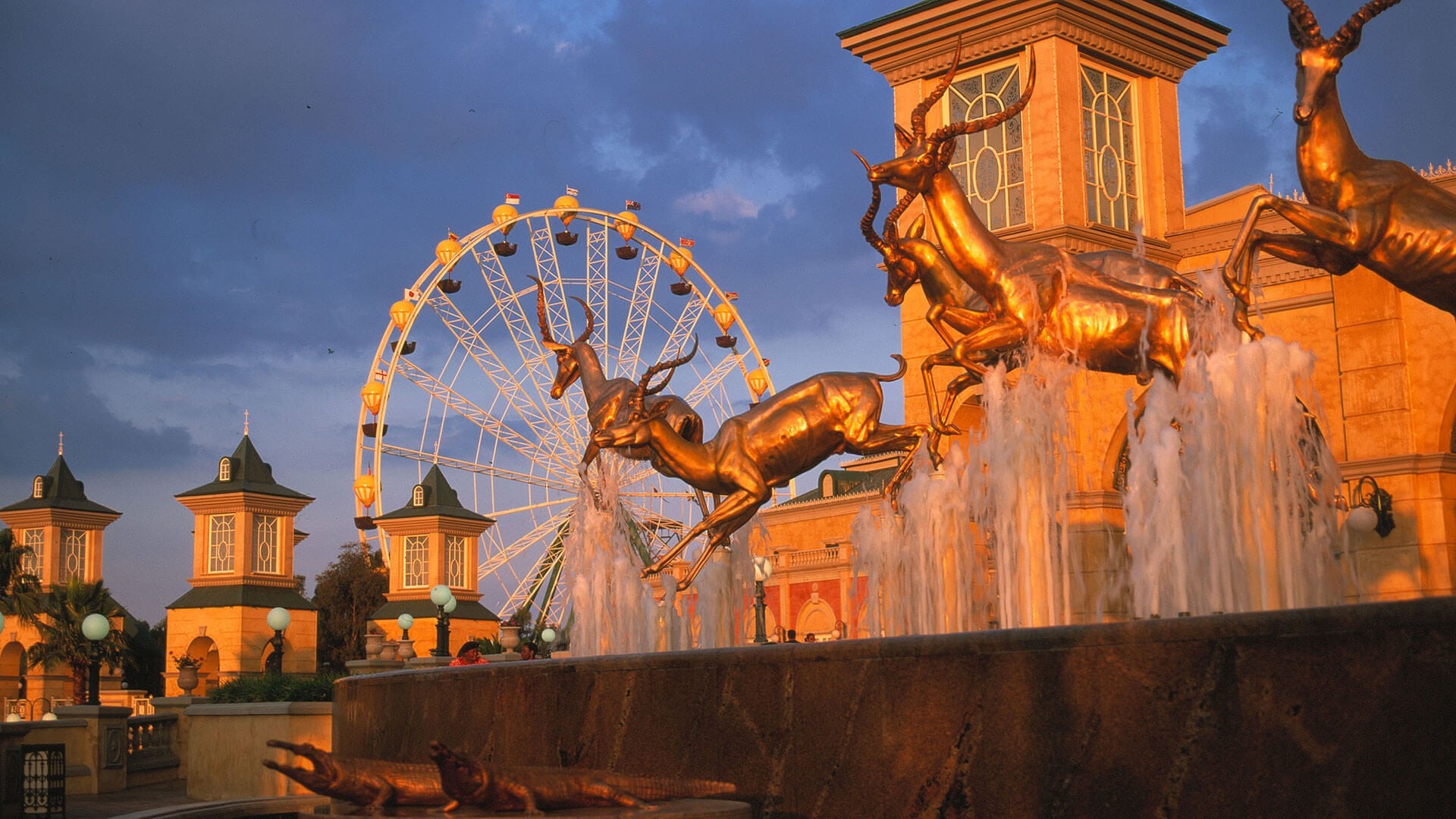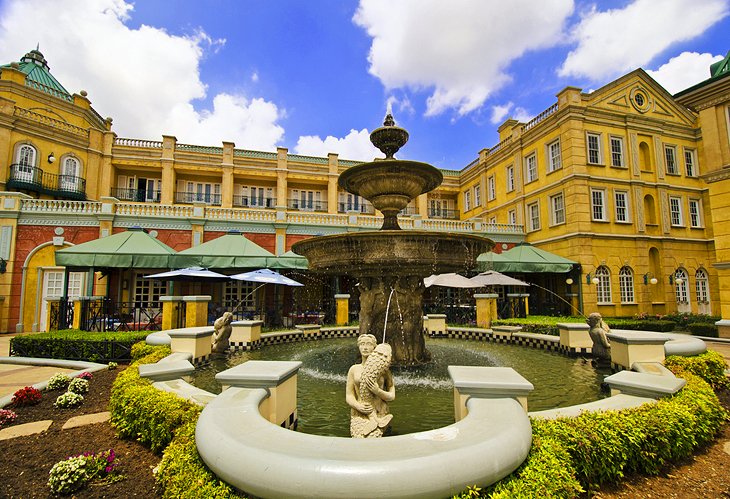
Johannesburg, or Jozi as it’s affectionately known, is a city of captivating contrasts. A pulsating metropolis built on the foundations of gold, it embodies a spirit of resilience, innovation, and a vibrant cultural tapestry woven from diverse communities. Beyond its glittering skyline and bustling streets lies a complex history, a testament to the struggles and triumphs of South Africa. Exploring Johannesburg is an experience that will challenge, inspire, and leave you with a profound understanding of this dynamic nation.
This article serves as your comprehensive guide to Johannesburg, providing insights into its top attractions, historical significance, practical travel tips, accommodation options, transportation methods, and the ideal time to visit, ensuring you make the most of your journey into the heart of South Africa.
A Glimpse into the City’s Soul: Top Attractions

Related Articles about Johannesburg: A City of Gold and Grit – Unveiling the Heart of South Africa:
- Norway: A Symphony of Fjords, Lights, and Ancient Tales – Your Ultimate Travel Guide
- The Electric Heart of Vietnam: An Insider’s Guide to Ho Chi Minh City
- Busan Beckons: A Guide to Unforgettable Stays in South Korea’s Coastal Gem
- Portugal’s Enchanting Embrace: A Guide to its Best Hotels and Unforgettable Experiences
- A Grand Tour of India: Unveiling the Best Hotels and Experiences
Johannesburg offers a diverse array of attractions, catering to history buffs, art enthusiasts, nature lovers, and thrill-seekers alike. Here are some of the must-visit destinations:
1. Apartheid Museum: No visit to Johannesburg is complete without a journey through the Apartheid Museum. This powerful and deeply moving museum chronicles the history of apartheid, the system of racial segregation and discrimination that plagued South Africa for decades. Through evocative exhibits, compelling photographs, and personal accounts, the museum offers a sobering yet crucial understanding of this dark period in South Africa’s history. It’s a place for reflection, remembrance, and a commitment to a more just future. Allow at least 2-3 hours to fully absorb the museum’s profound message.
2. Constitution Hill: Perched atop a hill overlooking the city, Constitution Hill is a living museum and former prison complex. It served as a detention center for both political prisoners and common criminals, including Nelson Mandela and Mahatma Gandhi. Today, it houses the Constitutional Court, South Africa’s highest court, symbolizing the nation’s commitment to justice and equality. Explore the infamous Number Four prison, the Women’s Jail, and the Old Fort, gaining insight into the lives of those who were incarcerated within its walls. Guided tours are highly recommended to gain a deeper understanding of the site’s significance.
3. Soweto Township: A vibrant and historically significant township, Soweto (South Western Townships) offers a glimpse into the heart of South Africa’s struggle for freedom. Explore the iconic Vilakazi Street, the only street in the world to have housed two Nobel Peace Prize winners, Nelson Mandela and Archbishop Desmond Tutu. Visit Mandela House, the former home of Nelson Mandela, and Hector Pieterson Memorial, a poignant reminder of the Soweto Uprising of 1976. Soweto is a living testament to resilience and a vibrant cultural hub, offering opportunities to experience local life, enjoy traditional cuisine, and engage with the community. Consider taking a guided tour to gain a comprehensive understanding of the township’s history and culture.
4. Gold Reef City: Step back in time at Gold Reef City, a theme park built on the site of a former gold mine. Experience the thrill of riding roller coasters, explore the underground mine shaft, and witness the process of gold pouring. The park also features historical reenactments, traditional dances, and a casino. Gold Reef City offers a fun and educational experience, providing insights into Johannesburg’s gold mining heritage. It’s a great option for families and those seeking a dose of entertainment.
5. Cradle of Humankind: A UNESCO World Heritage Site, the Cradle of Humankind is a paleontological treasure trove located just outside Johannesburg. This site is home to some of the world’s most significant fossil discoveries, shedding light on the origins of humankind. Explore the Maropeng Visitor Centre, an interactive exhibition that takes you on a journey through human evolution. Visit the Sterkfontein Caves, where the famous "Mrs. Ples" fossil was discovered. This is a must-visit for those interested in science, history, and the origins of humanity.
6. Maboneng Precinct: A vibrant and revitalized urban district, Maboneng is a hub of creativity, culture, and entertainment. Explore its trendy art galleries, browse independent boutiques, and indulge in diverse culinary experiences. The area is known for its vibrant street art, rooftop bars, and bustling marketplaces. Maboneng is a great place to experience the city’s contemporary culture, enjoy a lively atmosphere, and soak up the creative energy.
7. Johannesburg Art Gallery (JAG): Located in Joubert Park, the JAG houses a significant collection of South African and international art, spanning various periods and styles. From traditional African art to contemporary masterpieces, the gallery offers a diverse and enriching artistic experience. It’s a great option for art enthusiasts and those looking to immerse themselves in the local art scene.
8. Neighbourgoods Market (Weekend Markets): Johannesburg boasts a vibrant market scene, with several weekend markets offering a diverse range of food, crafts, and entertainment. The Neighbourgoods Market in Braamfontein is a popular choice, offering a wide selection of artisanal food, drinks, and locally made products. These markets are a great place to experience the city’s social life, sample local delicacies, and support local businesses.

9. Lion & Safari Park: Escape the city and experience the thrill of a safari at the Lion & Safari Park. Observe lions, cheetahs, wild dogs, and other African wildlife in their natural habitat. You can take a guided game drive, interact with lion cubs, and enjoy a delicious meal at the park’s restaurant. This is a great option for wildlife enthusiasts and those seeking a close encounter with the African bush.
10. Walter Sisulu National Botanical Garden: Escape the urban hustle and bustle at this beautiful botanical garden, home to diverse flora and fauna. Witness the majestic Verreaux’s eagles nesting at the cliff face, explore the well-manicured gardens, and enjoy a picnic amidst the natural beauty. It’s a perfect spot for relaxation, nature walks, and birdwatching.
A Tapestry of Trials and Triumphs: Johannesburg’s History
Johannesburg’s history is deeply intertwined with the discovery of gold in 1886. The city rapidly grew from a humble mining camp to a bustling metropolis, attracting prospectors, entrepreneurs, and laborers from all over the world. This influx of people led to rapid urbanization and the establishment of a diverse society.
However, the pursuit of gold also fueled social inequalities. The discovery of gold led to the development of a segregated society, with white settlers gaining control of the land and resources, while black Africans were relegated to the role of laborers. This system of segregation laid the foundation for the apartheid regime.
The city played a crucial role in the struggle against apartheid. Johannesburg became a center of political activism, with numerous resistance movements and protests taking place within its boundaries. Nelson Mandela and many other anti-apartheid activists were imprisoned in Johannesburg, and the city became a symbol of the fight for freedom and equality.
The end of apartheid in 1994 marked a new era for Johannesburg. The city began to rebuild and reinvent itself, grappling with the legacy of its past while striving for a more just and equitable future. Today, Johannesburg is a city in transition, facing challenges such as poverty, inequality, and crime, while also embracing its vibrant cultural diversity and striving to become a global leader.
Navigating the City: Travel Tips for a Smooth Journey
- Safety: Johannesburg has a reputation for high crime rates. Exercise caution, especially at night. Avoid walking alone in isolated areas, and be aware of your surroundings. Consider using reputable transportation services like Uber or Bolt.
- Transportation: Johannesburg offers various transportation options, including taxis, buses, and the Gautrain (a rapid rail system connecting the city to the airport and other major destinations). Renting a car is also an option, but be prepared for heavy traffic and potential security concerns.
- Currency: The South African Rand (ZAR) is the local currency. ATMs are widely available, and credit cards are accepted at most establishments.
- Language: The official languages of South Africa are Afrikaans and English, but Zulu, Xhosa, and other indigenous languages are also widely spoken. English is commonly used in business and tourism.
- Health: Consult your doctor about necessary vaccinations and malaria precautions. Pack sunscreen, a hat, and insect repellent.
- Water: Drink bottled water to avoid any potential health issues.
- Bargaining: Bargaining is common in markets and informal settings, but not in established stores.
- Tipping: Tipping is customary in restaurants (10-15%), for taxi drivers, and for other service providers.
Finding Your Comfort Zone: Accommodation Options
Johannesburg offers a wide range of accommodation options to suit every budget and preference:
- Luxury Hotels: The Saxon Hotel, Villas & Spa and The Houghton Hotel are known for their exceptional service, luxurious amenities, and prime locations.
- Boutique Hotels: 54 on Bath and The Peech Hotel offer stylish and intimate settings, with personalized service and unique charm.
- Mid-Range Hotels: The Radisson Blu Hotel, Sandton and Southern Sun Hyde Park offer comfortable accommodations and convenient locations.
- Budget-Friendly Options: Backpackers’ hostels and guesthouses are widely available, offering affordable accommodation options and opportunities to meet fellow travelers.
- Self-Catering Apartments: Airbnb and other platforms offer self-catering apartments and houses, providing a more independent and cost-effective travel experience.
Getting Around: Transportation in Johannesburg
Navigating Johannesburg requires understanding the available transportation options:
- Gautrain: A modern and efficient rapid rail system connecting the airport to Sandton, Rosebank, and other major destinations. It’s a safe and convenient option for getting around the city.
- Uber/Bolt: Ride-hailing services are widely available and a safe and convenient way to get around, especially at night.
- Taxis: Taxis are available, but it’s recommended to use reputable taxi companies or pre-book your ride.
- Buses: A public bus system is available, but it can be unreliable and unsafe in some areas.
- Car Rental: Renting a car offers flexibility but requires careful consideration of traffic congestion and potential security risks. Ensure you have appropriate insurance and are familiar with local driving laws.
Timing Your Visit: The Best Time to Go
The best time to visit Johannesburg is during the shoulder seasons:
- March to May (Autumn): Pleasant temperatures, less rainfall, and vibrant foliage.
- September to November (Spring): Blooming flowers, comfortable temperatures, and sunny days.
The summer months (December to February) are hot and humid, with potential for afternoon thunderstorms. The winter months (June to August) are dry and cool, with chilly nights.
Conclusion: Embracing the Jozi Experience
Johannesburg is a city of contrasts, a place where history, culture, and progress converge. It’s a city that will challenge your perceptions, broaden your horizons, and leave you with a deeper appreciation for the complexities of South Africa. By embracing the city’s energy, exploring its diverse attractions, and taking necessary precautions, you can create a memorable and enriching travel experience. Johannesburg awaits, ready to welcome you with its warmth, its grit, and its enduring spirit of resilience. So pack your bags, prepare your itinerary, and get ready to discover the heart of South Africa.





